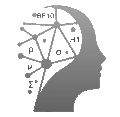There are more and more events with the theme of artificial intelligence for entrepreneurs. I’ve commented on one in the past. In this article I want to give a general overview of the use of that broad tool, which is absolutely not exhaustive.
Be careful, however, as I use the term artificial intelligence mainly for its most recent meaning, therefore the one associated with linguistics technologies as GPT and not to a more formal definition.
So I will not talk, to give a counter example, about how predictive statistical models, not linguistic but numeric, lower the maintenance stops, even if I took the liberty of inserting something about it.
I assume that you leave the operation almost entirely to the employees, which in some countries is rare due to a discussion of questionable mentality, which I will not address here. I will give some application examples
Entrepreneurs creating content
if you create content and do not delegate post production (cutting, editing, etc.), transcription with whisper in subtitle edit
Entrepreneurs who also act as salespeople
if you often have calls with clients and prospects, you’ve probably had to take notes manually. Pre-call you can have a privacy policy signed that allows you to record the call, where you specify the purpose of the recording: allow the AI to understand the content of the call to make a summary. So automated notes.
Entrepreneurs of manufacturing companies
not all donuts come with a hole. To reduce production waste, you can act on two fronts: statistical quality control, which allows you to identify the characteristics of the production process that lower the quality of the product, and artificial vision. Be careful, the use of a multimodal artificial intelligence, that is, one that understands texts and images, can become overkill. There are more streamlined and lower cost solutions. To put it more concretely, using GPT (from version 4 onwards) can have more operating costs in the medium term than using OpenCV.
A textbook case: on average every 500 meters of rolled steel has an imperfection. The imperfection would be detected by artificial vision rather than an employee, and would become data that would end up in the statistical quality monitoring system, which can lead to, for example, an average of 1 defect every 5000 meters.
Entrepreneurs of online stores or for customer service
new chatbots, which as brains call services such as GPT, allow for more targeted recommendations to potential customers that go well beyond the filters in the store. Clearly, it takes training the brain with hundreds of instances that have occurred and are structured, as well as having an up-to-date inventory. An example? Make me, or suggest products, for a Christmas basket for a family with a celiac. It greatly improves the user experience who is more likely to become a customer.
Generative artificial intelligence also allows you to simulate a dressing room, where the model dresses the most suitable garment for the potential customer, after having collected biometric data through photos and videos (pay attention to the GDPR).
Marketing agency entrepreneurs
we can start collecting customer needs via the chatbot, process them via a knowledge base called by the artificial intelligence, and have a project idea for the customer. As an alternative that starts from the end, depending on how the process is set up, we have data enrichment of the contact, or potential customer or lead, combined with a statistical forecasting model, built from a statistical model that explains the characteristics of the customers, lowers the man-hours for fact-finding calls, estimates, etc.
Legal agency entrepreneurs
if you help to access tenders or otherwise interface with legal lingo, integrating systems such as GPT into a data collection algorithm (documents) or an algorithm that reports publications allows the potential client to understand which tenders and rules suit their case.
Entrepreneurs in the catering sector
COVID has cleared the way for digital menus accessible by QR code. Imagine a chatbot, accessible by QR code, suggesting dishes based on the customer’s desires and conditions, e.g., allergies. Again obviously you need a history pinned appropriately by waiters, otherwise they become bland suggestions compared to what an “untrained GPT” could give you.
If you want this can also be done with some kind of form. So more tedious computer science.
For accountant owners
here you receive loads of documents, analogue and digital. Artificial vision, combined with a GPT tool with the extension of internet browsing, allows you to automate processes respecting the most recent laws. Example, from GPT’s reading of invoice x, is that expense deductible and/or detractable?
If you consider yourself educated on the topic, you will have noticed that I have mostly mentioned cases of AI assistants: reactive generative algorithms, because they react for example to a chat or visual input, not pro-active. The latter, also called AI agents, even promise to enter the workforce (citing Microsoft), therefore far beyond increasing productivity like certain chatGPTs used to write code or advertisements. We will probably hear more about it in 2026, given that at the date of writing this article I know of a single and isolated case of an agent used mostly internally on a software company’s code base.
There are also other types of assistants and agents, which do not necessarily integrate GPT. For example, in high-frequency finance there are many agents with boring computer science, called expert systems. Assistants and agents can be built with various technologies, including statistics. Do you want to talk about some of your cases? Let’s talk in a free first call.
